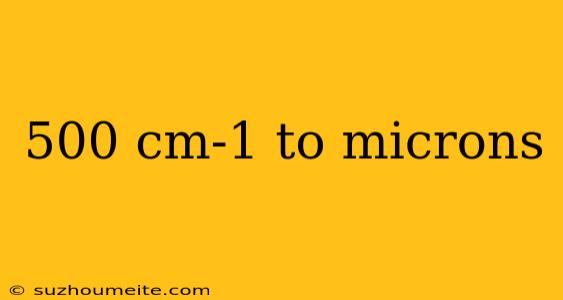Converting 500 cm^-1 to Microns: Understanding the Relationship between Wavenumber and Wavelength
Introduction
In spectroscopy, the units of measurement for wavelength and wavenumber are often used interchangeably, but they represent different physical quantities. Wavenumber is typically denoted by the unit cm^-1, while wavelength is expressed in units of meters (m) or microns (μm). In this article, we will explore how to convert 500 cm^-1 to microns and understand the underlying relationship between these two units.
Understanding Wavenumber and Wavelength
Wavenumber (cm^-1) is a measure of the number of waves per unit length, typically measured in reciprocal centimeters (cm^-1). It is a convenient unit for expressing the energy of a photon in spectroscopy. A higher wavenumber indicates a shorter wavelength and higher energy.
Wavelength (m or μm) is a measure of the distance between two consecutive peaks or troughs of a wave. It is a fundamental property of light and is related to the energy of the photon.
Converting 500 cm^-1 to Microns
To convert 500 cm^-1 to microns, we need to use the following relationship:
λ (microns) = 10,000 / ν (cm^-1)
where λ is the wavelength in microns and ν is the wavenumber in cm^-1.
Plugging in the value of 500 cm^-1, we get:
λ (microns) = 10,000 / 500 λ (microns) = 20
Therefore, 500 cm^-1 is equivalent to a wavelength of 20 microns.
Importance of Converting Units in Spectroscopy
Converting units between wavenumber and wavelength is crucial in spectroscopy, as it allows researchers to easily switch between different representations of spectral data. This conversion is particularly useful when working with different types of spectroscopy, such as infrared (IR) or nuclear magnetic resonance (NMR) spectroscopy, where the units of measurement may vary.
Conclusion
In conclusion, converting 500 cm^-1 to microns is a simple process that requires understanding the relationship between wavenumber and wavelength. By using the formula λ (microns) = 10,000 / ν (cm^-1), we can easily convert between these two units and gain a deeper understanding of the physical properties of light.
